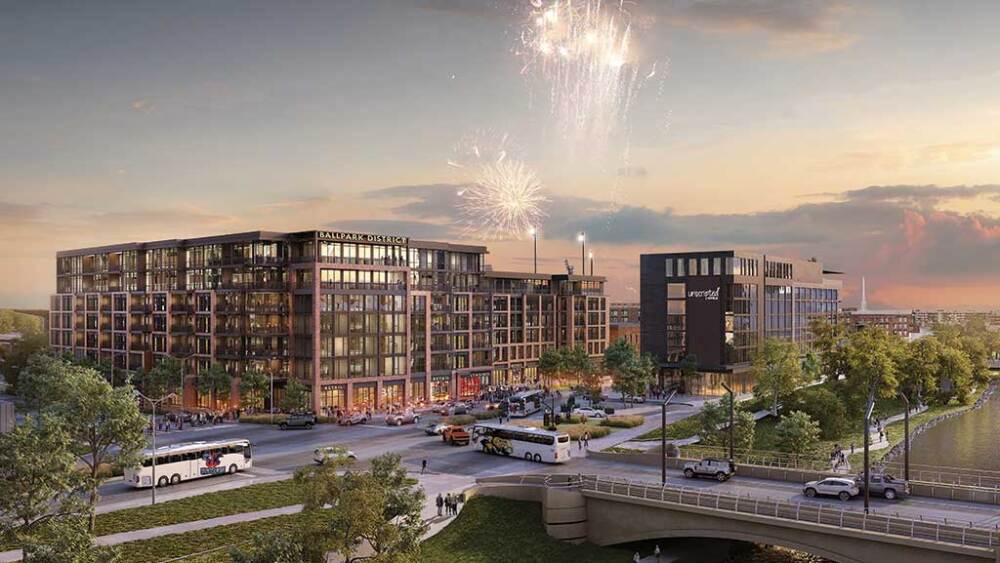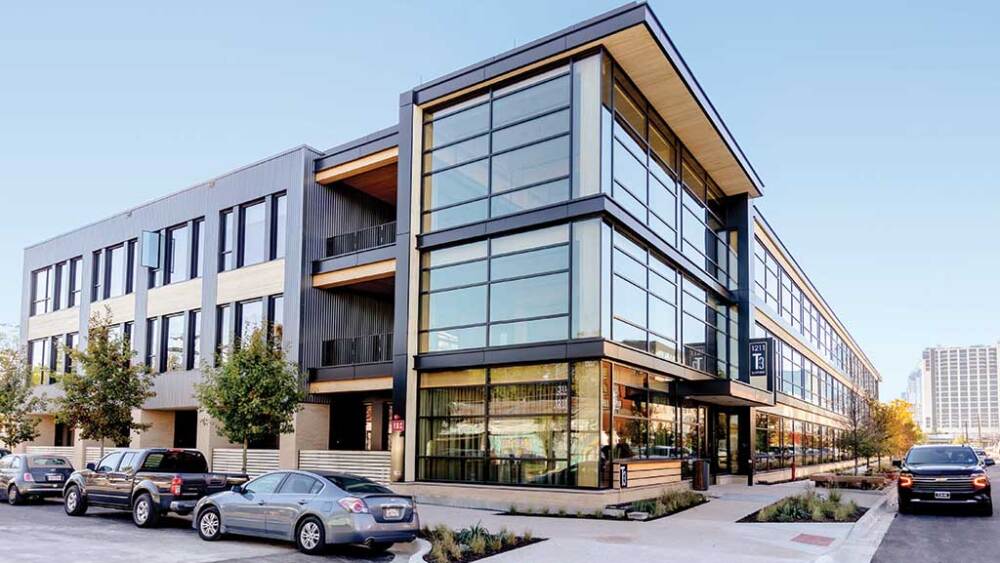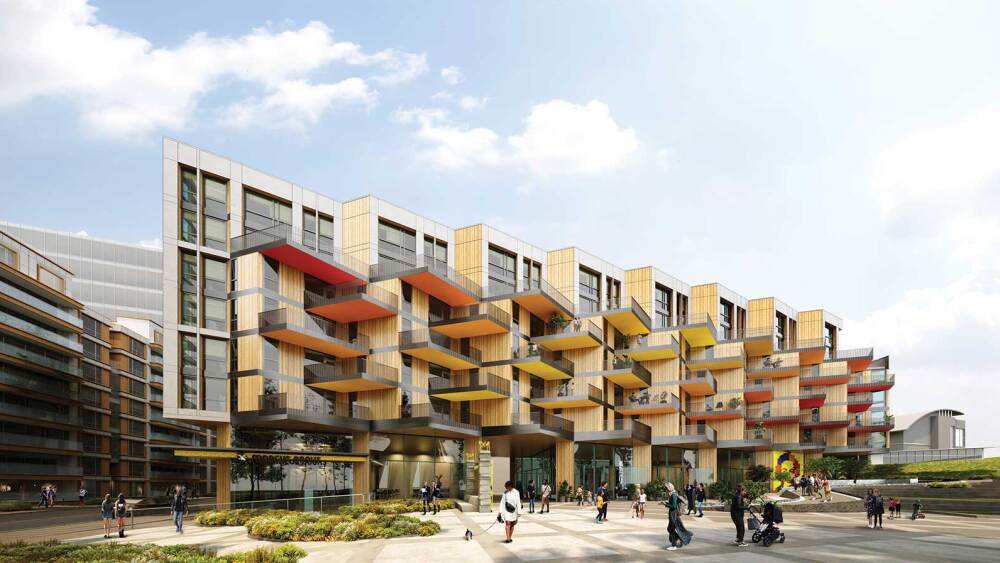If the past two years have taught us anything, it’s that our society’s deep desire to return to “normal” has sparked a reevaluation of what normal should entail. As urban populations continue to grow, and individuals look to reclaim their place in the community, the question arises: have our downtowns evolved enough to meet these new demands?
Reactivating our urban cores and transforming them into vibrant, accessible districts that provide fresh dining choices, retail opportunities, office spaces, entertainment options, green space, and a broader selection of affordable housing through purposeful placement is the key to community restoration.
When applied to housing projects specifically, placemaking principles can transform dwellings into integral components of thriving neighborhoods. Place-led housing embraces the idea that a home is not just a physical structure but a part of a larger ecosystem—somewhere that residents can connect with one another and with their surroundings.
This practice also emphasizes equity and inclusivity by ensuring that people of all ages, incomes, and backgrounds have access to safe, affordable, and dignified housing. Placemaking principles such as universal design, mixed-income housing, and accessible amenities can foster social equity and break down barriers to participation. By integrating placemaking principles into housing design and development, cities can create neighborhoods that are not only livable but also resilient for future generations.
Redefining urban living
Innovative housing design pushes the boundaries of conventional architecture by reimagining the urban dwelling as a nexus of functionality, sustainability, and aesthetic appeal. Such designs prioritize efficiency, flexibility, and adaptability, thereby reflecting the diverse lifestyles, identities, and aspirations of evolving modern city dwellers.
In Wichita, Kansas, housing planning for the Riverfront District development transcends traditional norms, leveraging its dynamic environment to redefine urban living. Centered on Riverfront Stadium, home to the Wichita Wind Surge, this mixed-use destination captures that energy and naturally integrates housing into the neighborhood and with the Arkansas River. This forward-thinking design prioritizes accessibility, enrichment, and community building, ensuring an energetic atmosphere for residents and visitors alike.
By harmonizing housing, hospitality, retail, food and beverage, and transportation within a unified master plan spanning 25 acres (10 ha), the development welcomes a new era of place-led housing. This approach elevates the urban experience and activates the surrounding streetscape to foster a dynamic hub where residents can effortlessly blend living, working, and leisure activities, all while embracing their natural surroundings and enriching the urban fabric.
A net zero future
Designing for our future means considering the impact of materials we’re using today. Through use of sustainable materials in housing developments, we’re able to minimize environmental impact, promote resource efficiency, and enhance residents’ quality of life. Placemaking strategies, such as mixed land use, compact development, and access to public transportation, can reduce reliance on cars, lower carbon emissions, and promote more healthful lifestyles.
The incorporation of green spaces, renewable energy sources, and eco-friendly building materials such as mass timber into housing developments further enhances these sustainability credentials. Mass timber, derived from sustainably managed forests, offers numerous environmental benefits, including carbon sequestration, reduced embodied carbon, and faster construction times compared to those of traditional building materials. Such material also adds a unique modern-industrial aesthetic infused with a sense of authenticity and a connection to nature that is highly sought after in urban areas.
In East Austin, Texas, a new T3 (Timber, Transit, and Technology) mass timber building epitomizes the concept of place-led housing through sustainable architecture and community-centric design principles. Through partnership with global developer Hines, the property features 102,000 square feet (9,476 sq m) of Class A office and 15 housing units, the first-ever residential component for a T3 development.
Not only does T3 ATX Eastside minimize environmental impact but the property also reflects the cultural and environmental values of the East Austin neighborhood. T3 ATX Eastside’s focus on engaging the community and revitalizing the area enhances the area’s vibrancy and inclusivity, highlighting how placemaking principles can fuel sustainable housing initiatives with a genuine connection to craftsmanship, thereby shaping the identity of the neighborhood.
Fostering diversity, equity, and inclusion
Placemaking emphasizes equity and inclusivity as essential elements of thriving communities. To foster diversity, equity, and inclusion effectively, initiatives should prioritize accessible amenities, cultural preservation and celebration, and equitable access to resources. Providing accessible amenities such as parks, playgrounds, and community centers ensures that all residents can participate in community life and enjoy recreational activities, regardless of their physical abilities.
Celebrating cultural diversity and preserving heritage through public art, events, and historical preservation efforts enhance the identity and authenticity of neighborhoods, thus promoting social cohesion and inclusivity. Through honest community engagement, involving residents, stakeholders, and local organizations in the decision-making process, placemaking initiatives can ensure that the needs, preferences, and aspirations of the community are represented and integrated into the design and development process.
In San Francisco’s Fillmore District, Freedom West Homes’ next iteration will stand as a beacon of equity and inclusivity, rooted in a storied history of community resilience. Established in the 1970s, amid the aftermath of redlining practices and urban renewal policies, the development was envisioned as a bastion of affordable housing and socioeconomic stability to counteract the displacement caused by redevelopment efforts.
Today, with 382 co-op–owned housing units spread over four city blocks, Freedom West Homes remains a testament to the enduring spirit of its residents. In collaboration with the co-op and its commitment to revitalizing the neighborhood, the project will embark upon a transformative journey. DLR Group’s design approach prioritizes community empowerment and social cohesion. The reimagined and renewed Freedom West Homes will honor its legacy while modernizing for future residents of the community.
The reimagined development, through DLR’s partnership with renowned landscape architect Walter Hood of Hood Design Studio, will transform Octavia Street into a vibrant community space, establishing the Founders Circle Plaza as the heart of the co-op and extended community. Designed with balconies facing the plaza, the development will be impactful and a beacon to the community.
From the creation of contemporary, accessible housing units to the integration of community spaces and amenities, as well as the lasting economic opportunities that will lay the foundation for wealth accumulation and socioeconomic advancement, the revitalized development will provide residents with a renewed sense of pride and belonging in their neighborhood.
Challenge meets opportunity
The integration of placemaking principles in housing projects represents a transformative approach to urban development, but it also presents challenges and complexities. Balancing the competing demands of economic viability, social equity, and environmental sustainability requires careful planning and collaboration among stakeholders. And if that’s not challenging enough, the implementation of placemaking strategies may face resistance from established interests or regulatory barriers.
As cities grapple with the challenges of rapid urbanization, climate change, and social inequality, these challenges can also present opportunities for innovation and creativity in housing design and development. By attaching the collective resources of communities, designers, policymakers, and developers, cities can overcome these obstacles and create housing projects that truly embody the principles of placemaking.
For the future, the integration of placemaking into housing design offers a promising path forward, where every resident can find a sense of belonging and opportunity in their built environment. Through collaboration and creativity, we can unlock the full potential of place-led housing to shape the cities of tomorrow into vibrant, resilient, and inclusive spaces for all, without compromise.







